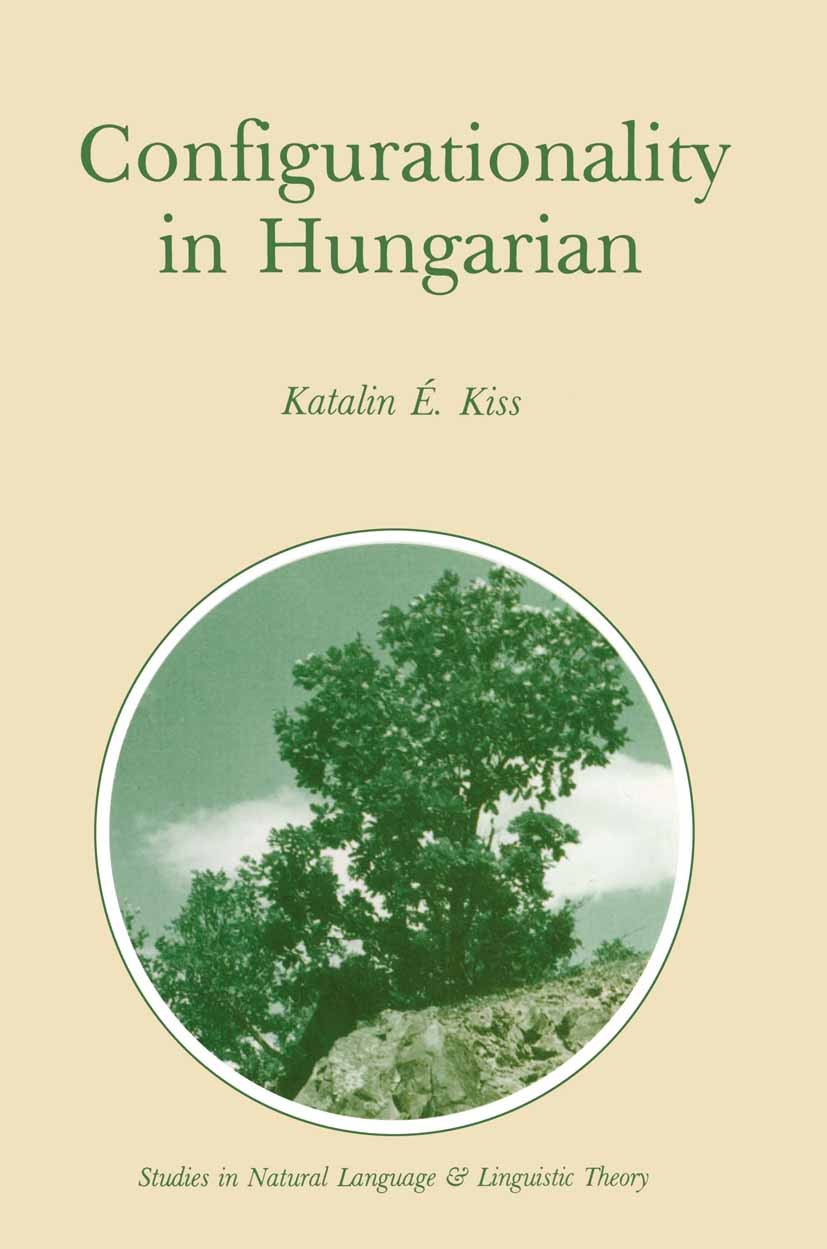| 書目名稱 | Configurationality in Hungarian | | 編輯 | Katalin é. Kiss | | 視頻video | http://file.papertrans.cn/236/235303/235303.mp4 | | 叢書名稱 | Studies in Natural Language and Linguistic Theory | | 圖書封面 |  | | 描述 | The purpose of this book is to argue for the claim that Hungarian sentence structure consists of a non-configurational propositional component, preceded by configurationally determined operator positions. In the course of this, various descriptive issues of Hungarian syntax will be analyzed, and various theoretical questions concerning the existence and nature of non- configurational languages will be addressed. The descriptive problems to be examined in Chapters 2 and 3 center around the word order of Hungarian sentences. Chapter 2 identifies an invariant structure in the apparently freely permutable Hungarian sentence, pointing out systematic correspondences between the structural position, interpre- tation, and stressing and intonation of the different constituents. Chapter 3 analyzes the word order phenomenon traditionally called ‘sentence inter- I twining‘ of complex sentences, and shows that the term, in fact, covers two different constructions (a structure resulting from operator movement, and a base generated pattern) with differences in constituent order, operator scope and V-object agreement. Chapter 4 deals interpretation, case assignment, with the coreference possibilit | | 出版日期 | Book 1987 | | 關(guān)鍵詞 | Index; adverbial; grammar; infinitive; pronouns; quantifiers; subject | | 版次 | 1 | | doi | https://doi.org/10.1007/978-94-009-3703-1 | | isbn_softcover | 978-90-277-2456-4 | | isbn_ebook | 978-94-009-3703-1Series ISSN 0924-4670 Series E-ISSN 2215-0358 | | issn_series | 0924-4670 | | copyright | Akadémiai Kiadó, Budapest, Hungary 1987 |
The information of publication is updating

|
|
 |Archiver|手機(jī)版|小黑屋|
派博傳思國(guó)際
( 京公網(wǎng)安備110108008328)
GMT+8, 2025-10-16 16:46
|Archiver|手機(jī)版|小黑屋|
派博傳思國(guó)際
( 京公網(wǎng)安備110108008328)
GMT+8, 2025-10-16 16:46


